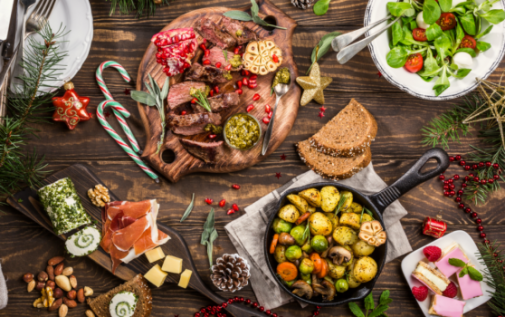Warning: Make sure you know the “danger zone” when storing food this holiday season

Among the joys of great holiday meals are great holiday leftovers.
Chowing down on ham sandwiches and stuffing the day after Christmas or turkey sandwiches and mashed potatoes the day after that sure hits the spot, but what about a day or two after that?
Are those leftovers still safe?
“Just because food looks and smells okay does not mean it is safe to eat,” says Alla Gutina, an Advocate nurse and infection preventionist at Advocate Good Shepherd Hospital in Barrington., Ill. “You have to be careful.”
Among the risks when leftovers aren’t handled or stored properly is food poisoning. Gutina says symptoms usually are limited to the gastrointestinal tract and depend on which microbe you eat.
“Symptoms can appear hours after the food is ingested or may not appear until days or weeks later,” she says, adding that the most common symptoms include nausea, vomiting, abdominal pain, diarrhea – which may be watery or bloody, and fever.
Less commonly, neurologic symptoms develop, such as blurry vision, dizziness or tingling in the arms. In some instances, the most life-threatening problems occur several days after the start of intestinal symptoms.
If symptoms are persistent or severe, if people have an underlying medical condition or if there are worrisome signs or symptoms, such as temperature greater than 100.4 degrees F, severe abdominal pain, inability to eat or drink, bloody stool or vomit, they should see a health care provider for evaluation and treatment.
To reduce the risk of food poisoning, the U.S. Department of Agriculture recommends following these guidelines for handling and reheating leftovers safely:
- Bacteria grow rapidly between the temperatures of 40 degrees F and 140 degrees F. This is considered the “danger zone”. After food is safely cooked, hot food must be kept hot at 140 degrees F or warmer to prevent bacterial growth. Within two hours of cooking food or after it is removed from an appliance keeping it warm, leftovers must be refrigerated.
- Throw away any hot or cold leftovers that have been left out for more than two hours at room temperature.
- To prevent bacterial growth, it’s important to cool hot food rapidly to the safe refrigerator-storage temperature of 40 degrees F or below. To do this, divide large amounts of food into shallow containers.
- Cut large items of food into smaller portions to cool. For whole roasts, turkey or hams, slice or cut into smaller parts.
- Hot food can be placed directly in the refrigerator, or it can be rapidly chilled in an ice or cold water bath before refrigerating.
- Cover leftovers, wrapping them tightly in airtight packaging or sealing them in storage containers. These practices help keep bacteria out, retain moisture and prevent leftovers from picking up odors from other foods. Immediately refrigerate or freeze the wrapped leftovers for rapid cooling.
- Leftovers can be stored in the refrigerator for three or four days or frozen for three or four months. Although safe indefinitely, frozen leftovers can lose moisture and flavor when stored for longer in the freezer.
- When reheating leftovers, be sure they reach 165 degrees F. Use a food thermometer to check the internal temperature of the food. Reheat sauces, soups and gravies by bringing them to a rolling boil. Cover leftovers to reheat. This retains moisture and ensures that food will heat all the way through.
- Thaw frozen leftovers in the refrigerator, cold water or the microwave oven. When thawing leftovers in a microwave, continue to heat until it reaches 165 degrees F as measured with a food thermometer.
- It is safe to reheat leftovers without thawing either in a saucepan, microwave or oven. Reheating will take longer than if the food is thawed first, but it is safe to do when time is short.
Related Posts
Comments
About the Author
Kathleen Troher, health enews contributor, is manager of public affairs and marketing at Advocate Good Sheperd Hospital in Barrington. She has more than 20 years of journalism experience, with her primary focus in the newspaper and magazine industry. Kathleen graduated from Columbia College in Chicago, earning her degree in journalism with an emphasis on science writing and broadcasting. She loves to travel with her husband, Ross. They share their home with a sweet Samoyed named Maggie.

















